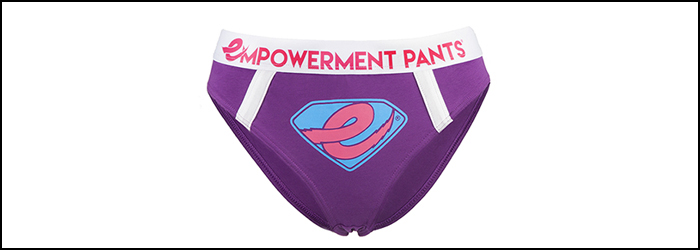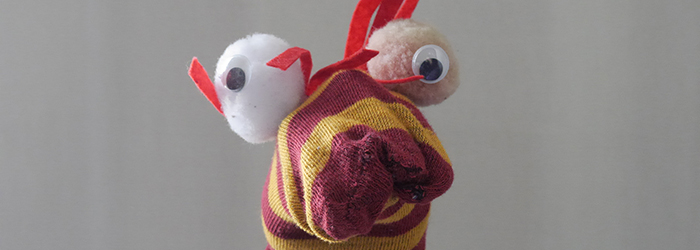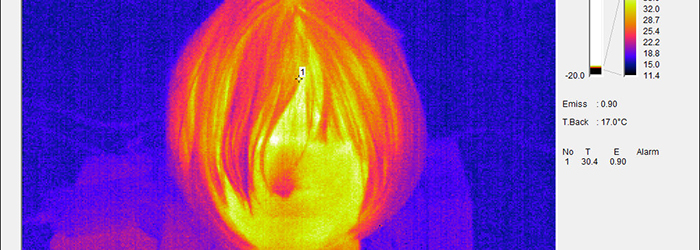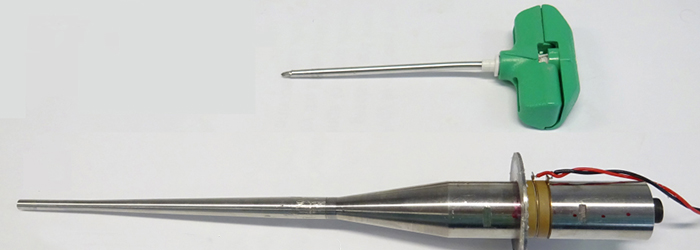Top to toe technology
This research project started by addressing long-standing safety and comfort issues in wigs used by Alopecians. Some of the innovative technologies developed are now being applied in the field of prosthetics, helping to increase the durability and appearance of prosthetic legs covers.

Alopecia is a term used for hair loss. It can be anything from a small patch on the head to the loss of every hair on the body. Some people with Alopecia choose to wear wigs to improve their own body image. However, traditional wigs can be uncomfortable and hot to wear due to the cap, which the hair is attached to.
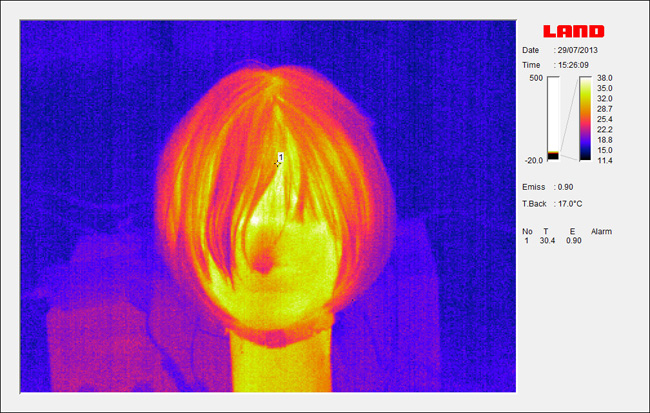
Thermal imaging techniques were used to study heat retention and loss when wearing a wig.
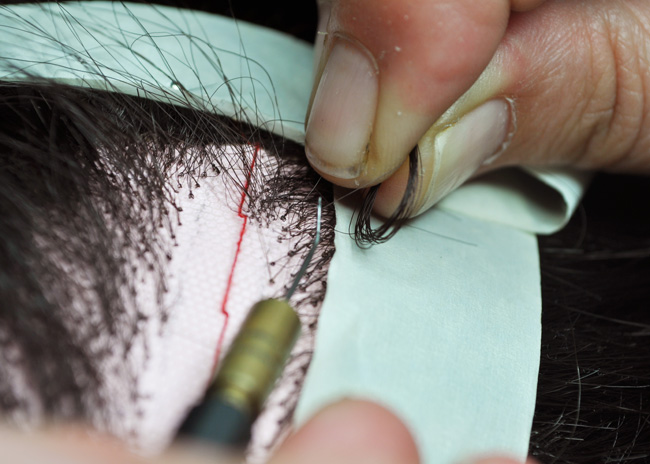
This image shows hair being knotted by hand into the new cap. Improvements were made in the cap to aid heat loss. Safety improvements were also made in the hair used; there are currently no fire safety regulations for wigs but there are regulations for the hair used in dolls.
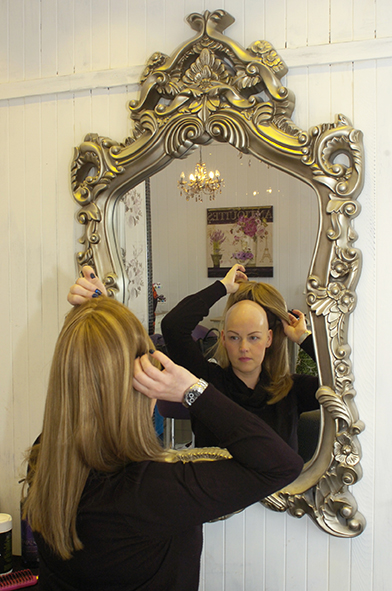
These improvements make the new wigs more appealling to use and can help improve body image and self esteem in wearers.
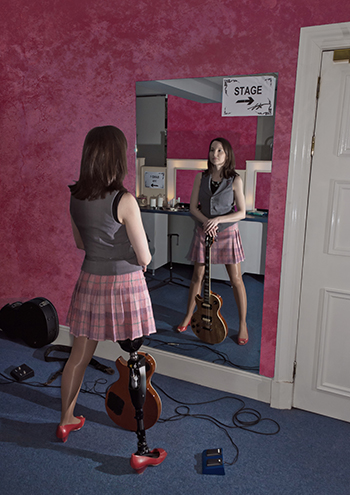
The wig technology is now being applied to help improve body image in prosthetic limb users.
Prosthetic legs can be covered with a foam case to make them look more natural. Currently the foam does not look natural, it is uniform in colour and lacks features such as the knee cap. The covers also have to be put on by medical professionals. New covers have been developed to help solve these issues, you can view this cover in action in the clip above. Improvements include:
- A knee cap - this not only adds a realistic look but reduces wear and tear on the foam at the joint.
- Colouration - the foam has a skintone print applied making it a closer match to the wearers natural skin tone.
- Hair stocking - using the technology developed for wigs a stocking, implanted with hair, has been developed. This fits over the foam cover and gives the appearance of body hair.
- A zip, on the inner leg, allows the user to remove the foam cover when needed.
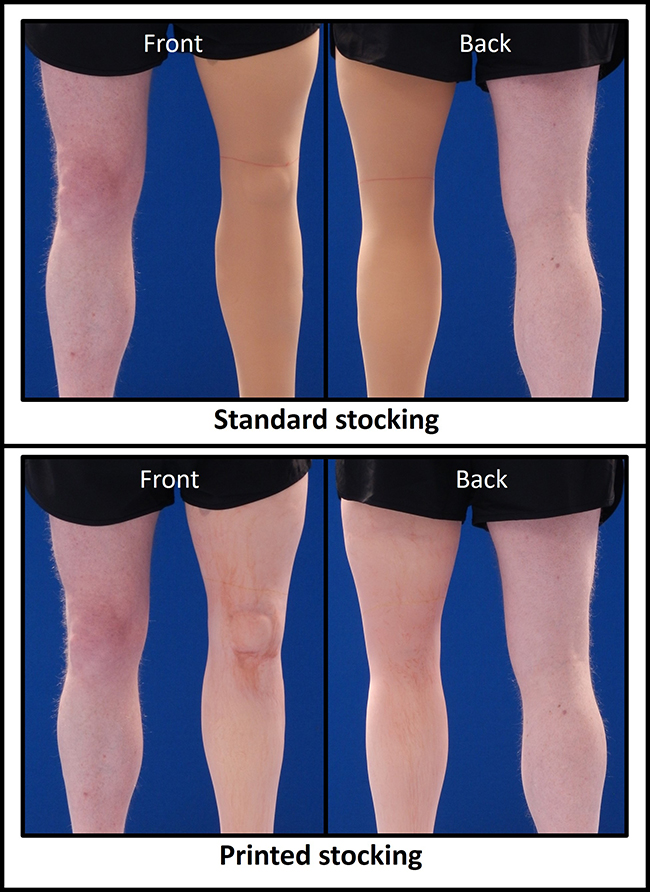
This picture shows the difference the printed stocking makes.
University of Strathclyde researchers involved in the project:
Ms Karena Moore-Millar
Dr Avril Thomson
Dr John Liggat
Dr Simon Shilton
Prof. Jonathan Corney
Dr Kevin Murray
Industrial partner:
Blatchford's & Sons Ltd
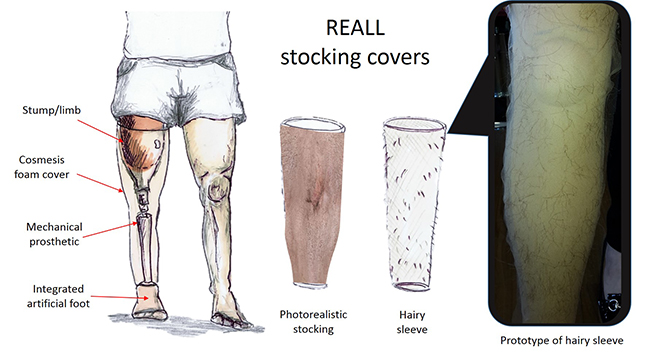
This picture shows how the addition of the 'hairy sleeve' adds a realistic layer to the foam cover.
For more information you can look at the following organisations who were involved in the project.




